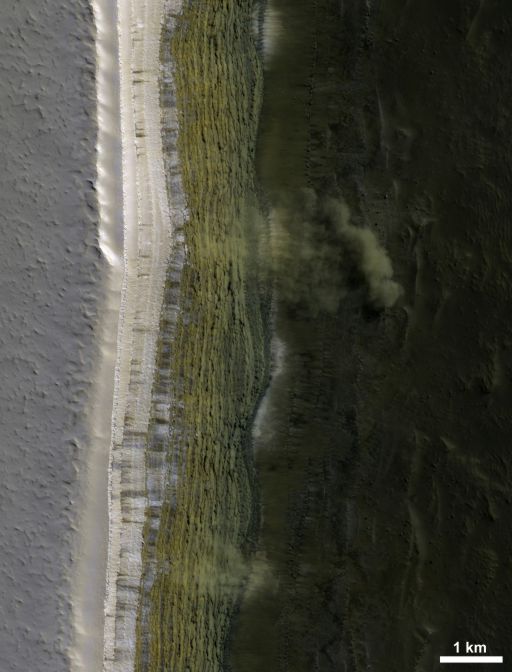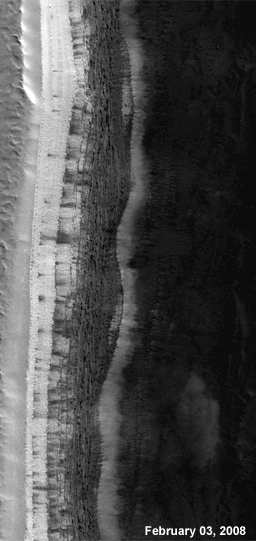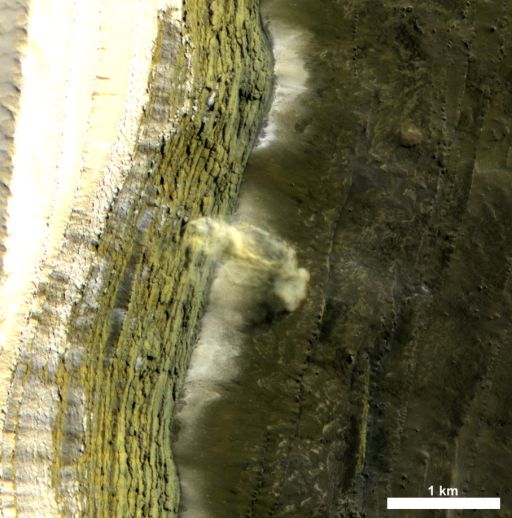Emily Lakdawalla • Mar 03, 2008
Before, during, and after avalanches on Mars
These are some amazing photos that I think pretty much speak for themselves. They contain billowing dust clouds tossed into the air just moments after an avalanche of dusty material cascaded down the steep slope at the edge of Mars' north polar cap. As usual for images from the HiRISE camera on Mars Reconnaissance Orbiter, I'm only showing you a tiny little bit of the entire image; you should visit the HiRISE website and use their "IAS Viewer" to check out and wander around the whole image and see what else you can find.

NASA / JPL / U. Arizona
Active avalanches on Mars
On February 19, 2008, while monitoring the edge of Mars' north polar cap for changes as the spring thaw arrives, Mars Reconnaissance Orbiter was fortunate to catch several avalanches in the act of spilling down the steep slope at the edge of the cap. Two avalanches are visible in this image, one large one near the top and a smaller one near the bottom. The cap is to the left; its steep cliff, running across the center of the image from top to bottom, is approximately 700 meters tall and reaches slopes as steep as 60 degrees. The steep part of the cliff is composed of layered material (the layers are difficult to see in this image) made mostly of water ice with atmospheric dust mixed in. To the right of the image, the cliff flattens out into a still moderate slope of about 20 degrees; this part of the cliff probably has a higher proportion of sand and dust in layers interspersed with ice-rich layers. The avalanches kicked up billowing clouds of dust that rise high into the air, casting shadows to their lower left.
NASA / JPL / U. Arizona / animation by Emily Lakdawalla
Before, during, and after avalanches on Mars
This animation flips back and forth between two images captured two weeks apart of the edge of Mars' northern polar cap by the HiRISE camera on Mars Reconnaissance Orbiter. Active avalanches -- or their immediate aftermath, visible as billowing clouds of dust -- are actually visible in both images. The image is about 500 meters wide. The shift in surface features between the two images is because Mars Reconnaissance Orbiter had to look off to one side of its orbital position in order to image the same area twice. The cliff is more foreshortened in the February 3 image than in the February 19 image.Support our core enterprises
Your support powers our mission to explore worlds, find life, and defend Earth. You make all the difference when you make a gift. Give today!
Donate

 Explore Worlds
Explore Worlds Find Life
Find Life Defend Earth
Defend Earth


